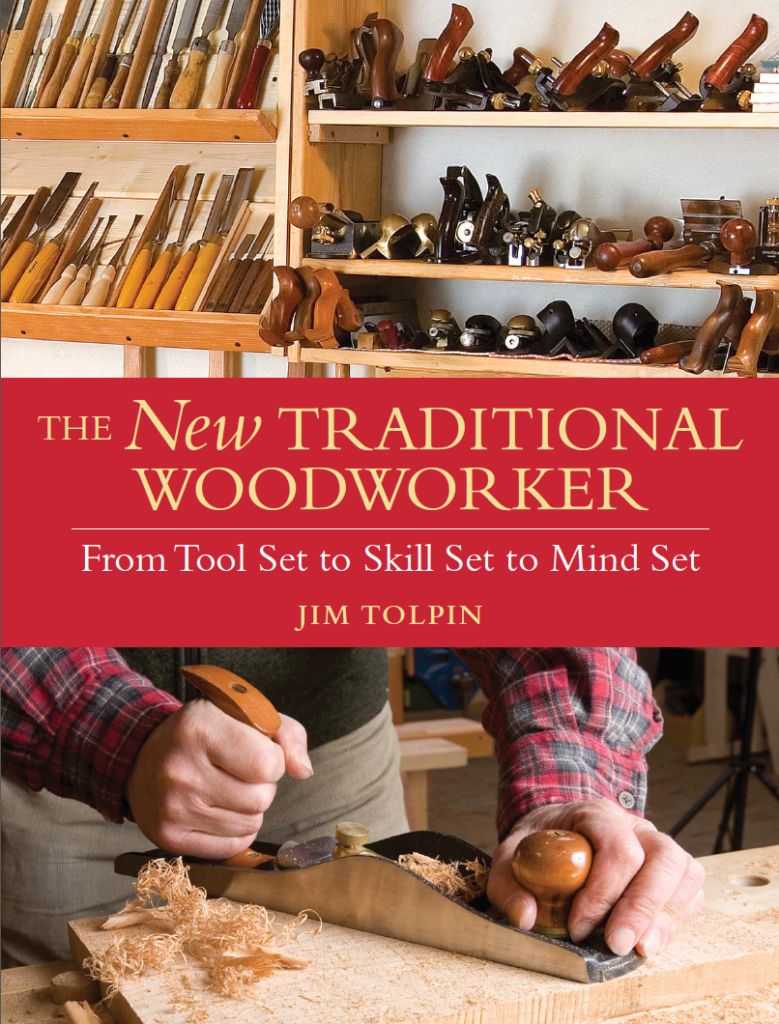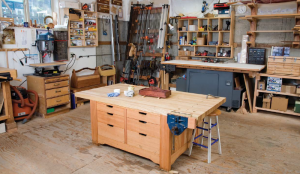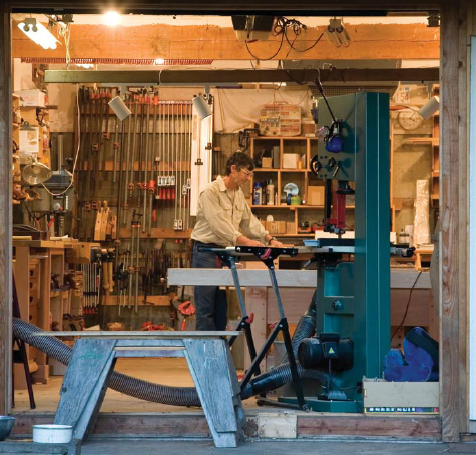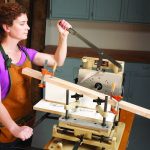We may receive a commission when you use our affiliate links. However, this does not impact our recommendations.
Editor’s note: You can pick up the Jim Tolpin’s Classics Collection for a great price right now over at ShopWoodworking.com.
When I approached the writing of Measure Twice, Cut Once–and especially later when developing The New Traditional Woodworker – I realized I needed to step back to a time when we woodwrights worked without electricity. I needed to immerse myself in the era in which we produced furniture solely with the energy of our bodies and the abilities of our hands and eye to guide our tools.

My learning process involved a combination of studying source literature (i.e. books written prior to the twentieth century); reading expert’s interpretations of these works (a call out to Chris Schwarz is more than appropriate here); and deep-diving into doing “hand and eye” work myself. It was this commitment to “research through reenactment”–with careful attention to the context of the materials, tools and working environment of the artisans of that era–that handed me the key to truly understanding their processes.
The most profound realization that came to me over the course of this three-year quest was that I had to work in the context of survival as the primary imperative. Only then could I fully grasp what drove our predecessor’s execution of design, layout, production and assembly. Working in this mindset provided me with numerous “aha” moments: I came to understand in my bones why our pre-industrial artisans didn’t produce detailed working drawings; why they didn’t make all their surfaces necessary square or parallel; and why they shaved or planed rather than abraded surfaces to shape or smoothness. I also, needless to say, had to up my game at making my tools sharp–really sharp–quickly and efficiently.
 I have only recently come to the realization that this working-to-survival-pressure was also the mindset in which I approached the writing of “Table Saw Magic”. Though my woodworking career saw me fully immersed in the industrial era, that didn’t mean I was getting a free ride into making a living at it! To succeed as a small-shop woodworker competing with large-shop companies I had to figure out the most efficient ways to make my primary machine–the table saw–produce parts for me.
I have only recently come to the realization that this working-to-survival-pressure was also the mindset in which I approached the writing of “Table Saw Magic”. Though my woodworking career saw me fully immersed in the industrial era, that didn’t mean I was getting a free ride into making a living at it! To succeed as a small-shop woodworker competing with large-shop companies I had to figure out the most efficient ways to make my primary machine–the table saw–produce parts for me.
This imperative drove not only the development of my small-shop approach to tuneup and maintenance but also to the creation of the array of shop-made fixtures that would comprise the core of the book.
Looking back, I must say I have fully enjoyed my immersion in both the industrial arts as well as the “artisan” arts. While the former enabled me to work at woodworking for a living for nearly four decades, the latter has enabled me to continue working wood for the joy it brings to my life.
– Jim Tolpin

Here are some supplies and tools we find essential in our everyday work around the shop. We may receive a commission from sales referred by our links; however, we have carefully selected these products for their usefulness and quality.










